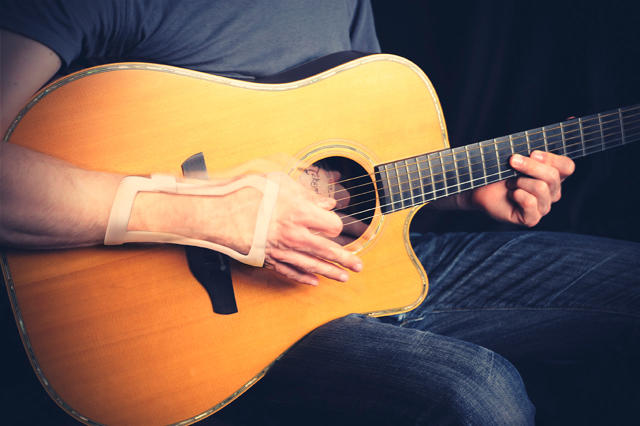Fiberglass casts may soon be relics of the past.
When Scott Summit tore a ligament in his arm he knew there was a better way to heal than spending six months trapped in a fiberglass cast from his biceps to his knuckles. The senior director of functional design at 3D Systems—a 3-D printing behemoth—and founder of Bespoke, a company that developed prosthetics and braces, Summit naturally turned to technology to find a better way.
“The exciting thing about 3-D printing is that there’s no one area with single growth,” he says. “Like the Internet in ’97, 3-D printing is exploding in all directions: aerospace, fine arts, dentistry, fashion—you name it. Companies are discerning that it’s the secret sauce of competitive advantage. With a specific nod to healthcare, it’s a certain sweet spot since human needs tend to be individual. Due to our morphology, there is no ‘one size fits all’ solution.”

Summit worked with his business partner, an orthopedic surgeon, to develop a 3-D printed cast that would keep his wrist stable and make the healing process more efficient. Traditional casts come with tons of downsides: It’s impossible to keep your arm clean, showering becomes an ordeal since you can’t get the thing wet, and your skin isn’t allowed to breathe.
Working with a team of designers with advanced technical expertise—a perk of being in the industry—Summit 3-D scanned his arm, created a 3-D model of it, and tailored a cast to fit precise specifications. They found that there needed to be three points of fixation to his arm and three points of fixation to his hand to keep the wrist stable and allow the ligament to heal properly after surgery. They fashioned the cast to sit on his arm in such away that it didn’t rest in an area where there wasn’t much tissue between the skin and bone (to avoid discomfort), where it wouldn’t sit on major nerves, and wouldn’t constrict blood flow.
The end result looks pretty spartan. At just five millimeters thick, it’s a fraction of a traditional cast’s heft. “It doesn’t seem like it’s enough structure [for stability], but that’s only from the context of having too much structure with a fiberglass cast,” Summit says. “That’s done more for the convenience for the doctor versus the quality of life for patient. It’s not the best way, it’s just the way it’s been done.”

The 3-D printed cast allowed Summit to shower like normal, to apply heat and cold directly to his wrist, and to use scar-reduction cream right on his skin—things that wouldn’t be possible with a normal cast. These measures helped to reduce swelling and increased circulation. Summit says that it allowed him to heal better than with traditional methods, and his doctor agreed. Moreover, he was able to wear regular clothes (most long-sleeve shirts won’t fit over a cast) and even go scuba diving.
While this is a one-off solution that was resource intensive, it could be the future of healing. Summit didn’t divulge how much this cost, but he says that with the right company embracing technology, it could be an expense-saving measure. First they would need to design the template for the braces, then have the flexibility to adapt for specific patients. Since each brace would have to be tailored to an individual, economies of scale don’t factor in production. The real savings comes with patient care and shortening the amount of time doctors and technicians work with patients. For example, Summit estimates it takes about two hours to remove and reapply a cast, a process that’s repeated throughout the recovery. It takes seconds with the brace he designed. Multiply that over the hundreds of patients a doctor sees, and that turns into savings. And, of course, there’s the substantial quality of life improvement for the patient.
“When we threw this idea for stabilization out there seven years ago, it was pretty outrageous,” Summit says. “Now we’ve proven it’s not a novelty—it’s significantly better medicine.”
[All Photos: via Bespoke]
Fast Company , Read Full Story
(98)
